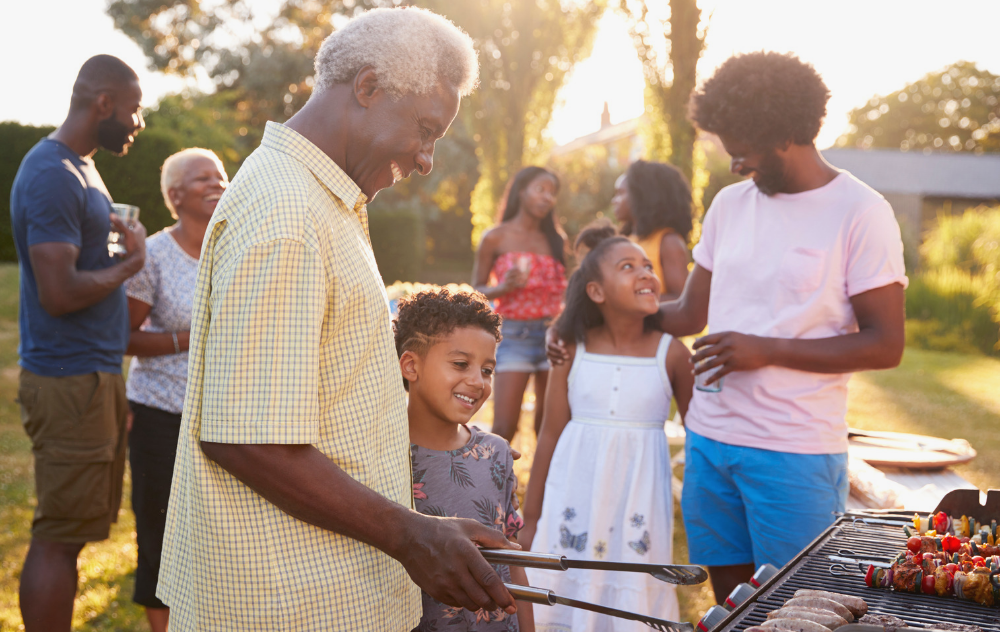With the Fourth of July right around the corner and corn season underway, many people may be skipping the burgers and brats. The reason being the rise in the number of studies recently published regarding the evidence that eating charred, smoked, and well-done meat could increase your cancer risk.
In a recent poll from CNN, they found that over 87% of people plan to grill for their Fourth of July festivities. However, when most people hear buzz words such as “cancer” or “carcinogens”, they start avoiding these activities without understanding the whole picture.
For the people who love grilling all summer long, we answer their pressing questions on how to reduce this risk and why this only occurs for only some types of foods.
What carcinogens does grilling meat produce?
Heterocyclic amines (HCAs) and polycyclic aromatic hydrocarbons (PAHs) are chemicals that form when meats like beef, fish, pork, and poultry, are cooked using high-temperatures, such as grilling directly over an open flame. In recent studies, these HCA and PAH carcinogens have been found to cause changes in DNA structures which may increase your risk of developing cancer.
Why does this happen?
HCAs are formed when sugar, amino acid, and creatine react at high temperatures like on the grill. In contrast, PAHs are formed when fat and juices drip into the grill causing flames and smoke. Many people like the taste of smoky, charred foods and use it to slowly smoke the meat over a long period of time. The smoke created by the fat drippings, contains PAHs that then adhere to the surface of the meat. This means that your food does not have to be burnt or charred to have harmful PAHs that will affect the meat. These HCA and PAH carcinogens are then metabolized by your body through enzymes.
According to CNN, around 5.5% of Americans grill more than once a week. This low statistic thankfully shows that many people tend to grill or BBQ only on special occasions or parties, rather than it being a main form of cooking meals on a daily basis.
But is all grilling unhealthy?
Not exactly. There are few ways you can reduce your risk of HCAs and PAHs without quitting the grill cold turkey, they include:
- Cook meats at a lower temperate for longer – HCAs begin forming around 325 degrees Fahrenheit.
- Grill fruits and vegetables versus meat – HCSs and PAHs don’t form on grilled fruit or veggies because they don’t have creatine and the amount of sugars that meats do. Also, they add antioxidants to your meal.
- Use a marinade – some studies have suggested that using spices high in antioxidants could lower total HCAs by over 65%.
- Use a temperature gage – know the minimum temperate, so you don’t overcook your meat. Well-done meat has 5 times more HCA than medium-rare. However, be especially careful when cooking fish, chicken, and ground beef.
- Avoid the ‘oink’ – Pork has the highest amount of HCAs and PAHs, especially bacon and pork chops.
- Trim excess fat – Helps reduce the amount of PAHs produced in the fat drippings.
Choosing vegetables and fruits over meat, as well as trimming excess fat, can help lower your risk of developing high cholesterol and blood pressure. Red meat, as well as other processed meats, can raise your risk for vascular diseases like Peripheral Artery Disease (PAD).
What’s the conclusion?
Understand the risks associated with grilling, but you don’t have to drop the meat altogether. Occasionally lighting up the charcoal or gas grill won’t have much effect, especially if you choose more vegetables and fruits, as well as taking other precautions mentioned above.

